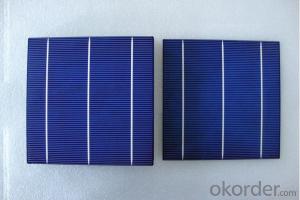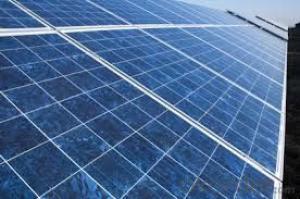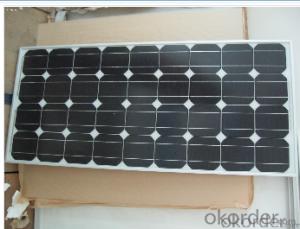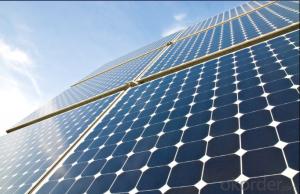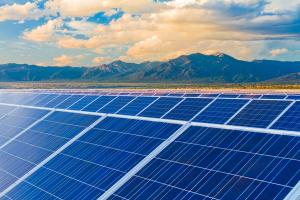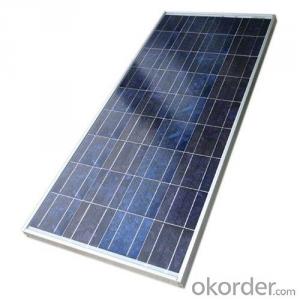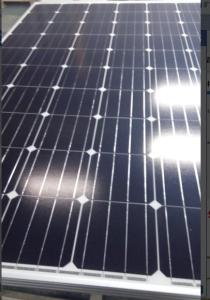Polycrystalline solar Panel with High Efficiency CNBM
- Loading Port:
- Qingdao
- Payment Terms:
- TT OR LC
- Min Order Qty:
- 10 set
- Supply Capability:
- 300000 set/month
OKorder Service Pledge
OKorder Financial Service
You Might Also Like
Polycrystalline Solar Modules
CNBM offers a range of small, medium and large polycrystalline solar modules, designed for a range of requirements.
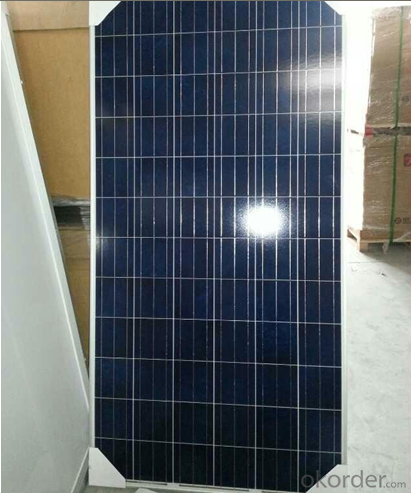
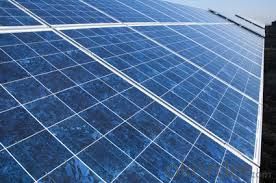
Specifications:
Tolerance | +/-3% |
Cell | Polycrystalline silicon solar cells (156 x 156mm) |
N0. of Cells | 60 (10 x 6) |
Dimension of Modules (mm) | 1650 x 990 x 40 |
Weight (kg) | 25.5 |
Limits:
Operating Temperature | -40~+85? |
Storage Temperature | -40~+85? |
Maximum System Voltage | 1000 VDC max. |
Hail Impact | Diameter of 28mm with impact speed |
Temperature and Coefficients:
NOCT | 48C+/-2? |
Voltage temperature coefficient (%/K) | -0.35 |
Current temperature coefficient (%/K) | 0.05 |
Power temperature coefficient (%/K) | -0.45 |
Characteristics:
Model: | SGM-200P | SGM-210P | SGM-220P |
Max-power voltage Vmp (V) | 29.2 | 29.4 | 29.41 |
Max-power current Imp (A) | 6.85 | 7.14 | 7.48 |
Open-circuit voltage Voc (V) | 36.5 | 36.69 | 36.9 |
Short-Circuit Current Isc (A) | 7.28 | 7.6 | 7.93 |
Max-power Pm(W) | 200 | 210 | 220 |
Model: | SGM-230P |
Max-power voltage Vmp (V) | 29.8 |
Max-power current Imp (A) | 7.72 |
Open-circuit voltage Voc (V) | 37.31 |
Short-Circuit Current Isc (A) | 8.19 |
Max-power Pm(W) | 230 |
STC: Irradiance 1000W/m2, module temperature 25?, AM-=1.5
Poly Crystalline Solar Panels Specifications Range
Maximum Power (Pm) | Dimension | Weight | Operating Voltage (Vmp) | Operating Current (Imp) | Open Circuit Voltage (Voc) | Short Circuit Current (Isc) |
0.45W | 140x80x10mm | 0.08kg | 3.3V | 150mA | 4.6V | 160mA |
1.0W | 162x140x10mm | 0.16kg | 7.5V | 150mA | 10.3V | 160mA |
4.5W | 269x251x23mm | 0.8kg | 16.5V | 0.27A | 20.5V | 0.3A |
10W | 420.1×268.9×22.6mm | 1.92kg | 17.5V | 0.58A | 20.5V | 0.6A |
20W | 425x502x50mm | 3.0kg | 16.8V | 1.19A | 21.0V | 1.29A |
30W | 593x502x22.6mm | 3.9kg | 16.8V | 1.78A | 21.0V | 1.94A |
40W | 655x537x50mm | 5.75kg | 17.3V | 2.31A | 22.1V | 2.54A |
50W | 839x537x50mm | 6.0kg | 17.5V | 2.9A | 21.8V | 3.17A |
65W | 1111x502x50mm | 7.2kg | 17.6V | 3.69A | 22.1V | 3.99A |
80W | 1204x537x50mm | 7.7kg | 17.6V | 4.55A | 22.1V | 4.8A |
- Q: Can solar cells be used in greenhouses or agricultural facilities?
- Yes, solar cells can be used in greenhouses or agricultural facilities to generate clean and renewable energy. This can help reduce reliance on traditional energy sources and lower carbon emissions. Additionally, solar cells can provide a consistent power supply for various agricultural operations, such as lighting, ventilation, and irrigation systems, enhancing productivity and sustainability in these facilities.
- Q: Can solar cells be used in powering electric boats?
- Yes, solar cells can be used to power electric boats. Solar panels can be installed on the boat's surface to capture sunlight and convert it into electricity, which can then be used to power the boat's electric motor and other electrical systems. This enables the boat to operate without relying on traditional fuel sources, making it a more environmentally friendly and sustainable option.
- Q: Can solar cells be used in satellites?
- Yes, solar cells can be and are commonly used in satellites as they provide a reliable and efficient source of power by converting sunlight into electricity.
- Q: Can solar cells be used in art installations?
- Yes, solar cells can be used in art installations. They can be integrated into various artistic designs and sculptures to generate renewable energy and add an innovative and sustainable element to the artwork.
- Q: What is the typical size and weight of a solar cell?
- The typical size of a solar cell ranges from a few square centimeters to several square meters, depending on its application. In terms of weight, solar cells are generally lightweight, weighing anywhere from a few grams to a few kilograms, again depending on their size and technology.
- Q: Can solar cells be used to power remote wildlife monitoring systems?
- Yes, solar cells can be used to power remote wildlife monitoring systems. Solar cells are a sustainable and reliable source of energy that can generate electricity from sunlight, making them ideal for powering remote systems where access to the grid may be limited. Additionally, solar cells are environmentally friendly, allowing for uninterrupted monitoring of wildlife without causing harm to their habitats.
- Q: How do solar cells perform in different climates?
- Solar cells can perform well in a variety of climates, although their efficiency may vary. In sunny climates, solar cells generally produce more electricity due to the abundance of sunlight. However, even in cloudy or cold climates, solar cells can still generate a significant amount of power, albeit at a slightly reduced efficiency. Overall, solar cells can function effectively in different climates and contribute to renewable energy generation.
- Q: Where can I find more information about the work process of solar cells
- The working process of solar cell is a bit complicated to describle.
- Q: Can solar cells be used in underwater vehicles?
- Yes, solar cells can be used in underwater vehicles. However, due to the limited availability of sunlight underwater, the efficiency of solar cells is significantly reduced compared to their performance on the surface. Therefore, other power sources such as batteries or fuel cells are often used in conjunction with solar cells to provide continuous power to underwater vehicles.
- Q: How can I understand the working principles of solar cells?
- As a complicated science which is quite new, you will spend lot of time in the research and analysis of solar cells.
Send your message to us
Polycrystalline solar Panel with High Efficiency CNBM
- Loading Port:
- Qingdao
- Payment Terms:
- TT OR LC
- Min Order Qty:
- 10 set
- Supply Capability:
- 300000 set/month
OKorder Service Pledge
OKorder Financial Service
Similar products
Hot products
Hot Searches
Related keywords











